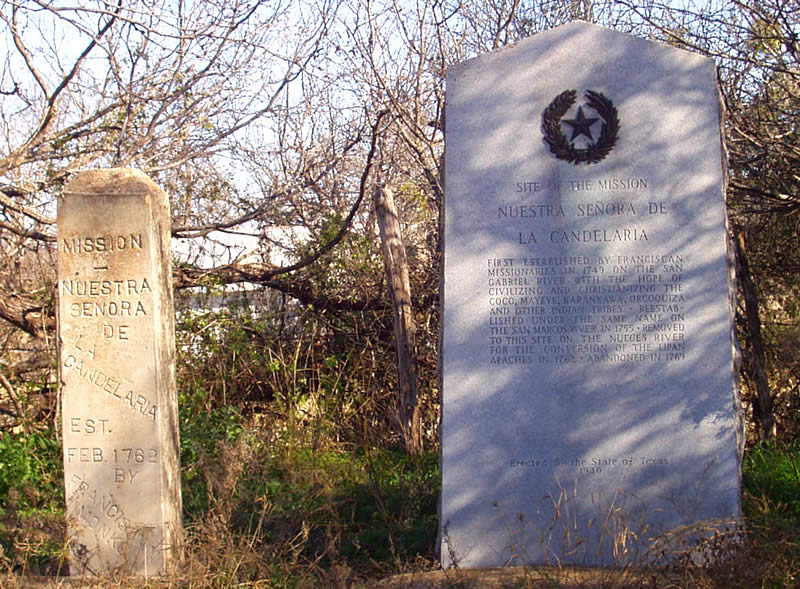
There was a house with its little chapel and in front of it a large hut constructed by Lipanes. The Fernandine missionaries flattered themselves that they would be able to induce these Indians to live in this place. They never did it and the Lipanes only laughed at the zeal and credulity of the friars.
—Nicolas de Lafora, 1767. The young Captain of Engineers was accompanying Marqués de Rubí on his inspection of the Spanish frontier,and the two were highly critical of operations at the Nueces missions.
In February 1762, Mission Nuestra Señora de la Candelaria del Cañon was founded, the second mission to be established in the upper Nueces Canyon at the behest of Lipan Apache leaders. Less than two weeks earlier, Mission San Lorenzo de la Santa Cruz had been founded some 14 miles upstream. The two Franciscan missions were established as hostile pressures from Comanches and other northern groups increased in the area. Four years earlier, Mission Santa Cruz de San Saba had been destroyed and many of its occupants—priests, soldiers, and Lipan Apaches—killed by a band of 2000 Wichita, Caddo, and Comanche warriors. For the Spanish missionaries, the Upper Nueces establishments provided more opportunities to “civilize” and convert the native peoples to Christianity and instill European ways while securing Spanish positions for settlements on the frontier.
Although more than 400 Apaches crowded the mission during the first week, they did not display a sustained interest in conversion. For a time, they looked to the Spanish soldiers for protection, but progress in construction of buildings and establishment of agricultural fields was slow. By 1766, the mission had an adobe friary and chapel, a granary made of mud-plastered jacal, and temporary huts for the Indians. Fields had been cleared but were poorly cultivated. In the meantime, Comanche raids continued in the area, threatening Lipan hunting and gathering forays.
It is not clear when the Lipans ceased coming to the mission. When Marqués de Rubí made his inspection tour of the Nueces missions and the San Saba presido in 1767, Candelaria was described as abandoned. In a highly critical assessment, Rubí denounced the poorly financed and scantly supplied operations on the frontier. There was little hope of converting the Lipans, he said, and the missionary efforts in the upper Nueces were halted less than a decade after they had began.